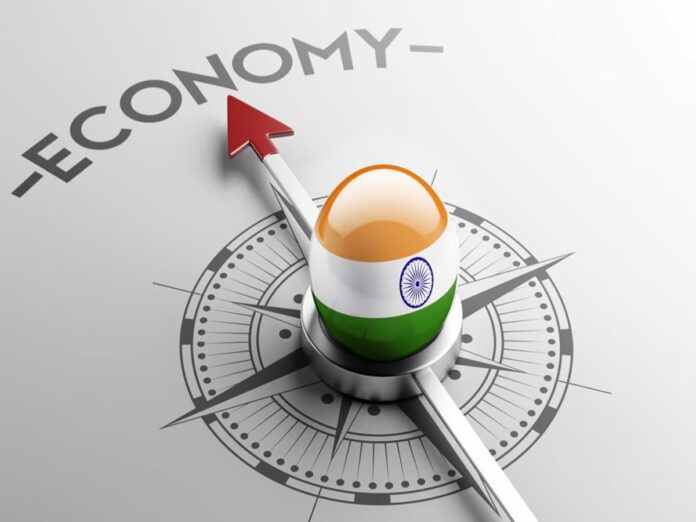India’s external debt has risen to $711.8 billion as of September 2024, reflecting a 4.3% increase from June of the same year, according to data released by the Finance Ministry. This marks a significant jump compared to $637.1 billion at the same time in 2023. The rise in debt highlights the growing reliance on foreign borrowing, which continues to play a pivotal role in financing India’s economic development and bridging trade deficits.
What Constitutes India’s External Debt?
External debt refers to the total liabilities that a country owes to foreign creditors. India’s external debt is diversified across various currencies, with U.S. dollar-denominated debt being the largest component, followed by the Indian rupee, Japanese yen, Special Drawing Rights (SDRs), and the Euro. The U.S. dollar remains the dominant currency, underscoring its importance in global trade and financial transactions.
The debt is categorized into long-term and short-term obligations. Long-term debt, comprising government and private sector borrowings, accounts for the bulk of the total, while short-term debt, primarily trade credits, makes up the remainder.
Reasons Behind The Increase
Several factors have contributed to the rise in India’s external debt:
- Rupee Depreciation: The Indian rupee’s depreciation against the U.S. dollar has increased the repayment burden for dollar-denominated loans.
- Higher Borrowings: To fund infrastructure projects and economic recovery initiatives post-pandemic, both the public and private sectors have resorted to foreign borrowing.
- Rising Interest Rates: Global economic conditions, including rising interest rates in the U.S. and other developed economies, have increased borrowing costs, adding to the overall debt burden.
- Trade Deficit: India’s trade deficit, driven by high imports of energy and raw materials, has necessitated external borrowing to balance payments.
Comparing The Trends: 2023 Vs. 2024
India’s external debt has grown substantially over the last year. At the end of September 2023, the debt stood at $637.1 billion, indicating a $74.7 billion increase in just 12 months. This upward trajectory reflects the government’s reliance on external borrowing to fund large-scale projects and manage fiscal deficits.
Despite the rise, India’s debt-to-GDP ratio remains relatively stable, indicating that the economy is capable of managing its repayment obligations. This stability is largely due to robust foreign exchange reserves, which provide a buffer against external vulnerabilities.
Implications Of Rising External Debt
The increase in external debt has both positive and negative implications:
Positive Impacts:
- Infrastructure Development: Borrowed funds are often directed toward critical infrastructure projects, boosting economic growth and improving public services.
- Global Investment Confidence: A diversified external debt portfolio signals India’s integration into global financial markets, fostering investor confidence.
Negative Impacts:
- Increased Repayment Burden: Rising debt leads to higher interest payments, which can strain government finances and reduce spending on social welfare programs.
- Currency Risk: A weak rupee increases the cost of servicing dollar-denominated debt, making the economy more vulnerable to exchange rate fluctuations.
Government’s Approach To Debt Management
The Indian government has implemented several strategies to manage external debt effectively:
- Prudent Borrowing: Efforts are being made to limit short-term borrowings and prioritize long-term, concessional loans with lower interest rates.
- Foreign Exchange Reserves: India maintains a healthy reserve of over $580 billion, providing a cushion to meet external debt obligations.
- Policy Reforms: Structural reforms aimed at boosting exports and attracting foreign direct investment (FDI) are being introduced to reduce reliance on debt.
- Diversification Of Debt: By borrowing in multiple currencies and from diverse sources, India mitigates risks associated with dependence on a single market or currency.
Historical Perspective On India’s External Debt
India’s reliance on external debt dates back to the early post-independence years when the country needed foreign capital to fund industrialization and development. In the 1990s, the economic liberalization era saw a significant increase in foreign borrowings as the country opened up to global markets.
In recent years, external debt has been a critical tool for financing infrastructure and achieving economic growth. However, lessons from past debt crises, such as the 1991 balance of payments crisis, underscore the importance of prudent debt management.
How India Compares Globally?
India’s external debt is relatively low compared to other major economies. For instance:
- The U.S. has an external debt of over $32 trillion, reflecting its position as a global financial hub.
- China’s external debt stands at approximately $2.5 trillion, driven by its massive trade and investment activities.
India’s conservative approach to borrowing and its strong economic fundamentals ensure that its debt remains sustainable.
Looking Ahead
As India’s economy continues to grow, managing external debt will remain a priority. Policymakers must strike a balance between leveraging foreign capital for development and maintaining fiscal discipline. Emphasizing export growth, increasing domestic production, and reducing import dependency will be critical to achieving this balance.
At $711.8 billion, India’s external debt underscores the nation’s growing integration into the global financial system. While it reflects the economy’s development ambitions, careful management is essential to ensure long-term stability and growth.




